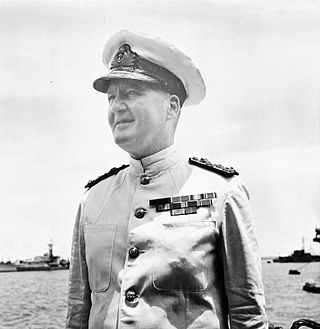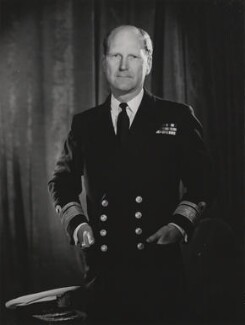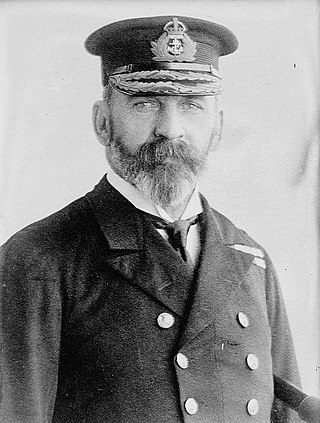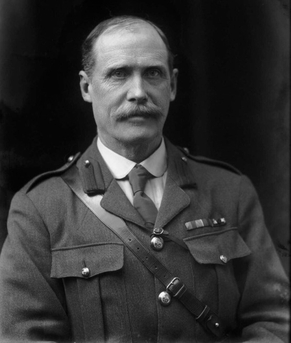Related Research Articles

The Women's Royal Naval Service was the women's branch of the United Kingdom's Royal Navy. First formed in 1917 for the First World War, it was disbanded in 1919, then revived in 1939 at the beginning of the Second World War, remaining active until integrated into the Royal Navy in 1993. WRNS included cooks, clerks, wireless telegraphists, radar plotters, weapons analysts, range assessors, electricians and air mechanics.

Vice Admiral Sir Timothy James Hamilton Laurence is a retired Royal Navy officer and husband of Anne, Princess Royal, the only sister of King Charles III. Laurence was equerry to Queen Elizabeth II from 1986 to 1989. He married her daughter, Princess Anne, in 1992.

Admiral of the Fleet Bruce Austin Fraser, 1st Baron Fraser of North Cape, was a senior Royal Navy officer. He served in the First World War, saw action during the Gallipoli Campaign and took part in the internment of the German High Seas Fleet at the end of the war. He also served in the Second World War initially as Third Sea Lord and Controller of the Navy and then as second-in-command and afterwards as commander of the Home Fleet, leading the force that destroyed the German battleship Scharnhorst. He went on to be First Sea Lord and Chief of the Naval Staff in which role he assisted in establishing NATO and agreed to the principle that the Supreme Allied Commander Atlantic should be an American admiral, in the face of fierce British opposition.
Admiral of the Fleet Sir David Benjamin Bathurst, is a former Royal Navy officer. He is the only living person, apart from King Charles III, holding the rank of Admiral of the Fleet in the Royal Navy since the death of Lord Boyce. After training as a pilot and qualifying as a helicopter instructor, Bathurst commanded a Naval Air Squadron and then two frigates before achieving higher command in the navy. He served as First Sea Lord and Chief of the Naval Staff from 1993 to 1995: in that capacity he advised the British Government on the deployment of Naval Support including Sea Harriers during the Bosnian War.
Admiral Sir John Jeremy Black,, known as Jeremy Black or J. J. Black, was a senior Royal Navy officer. He commanded the aircraft carrier HMS Invincible during the Falklands War, and later served as Commander-in-Chief Naval Home Command from 1989 until his retirement in 1991.

Admiral of the Fleet Sir Edward Beckwith Ashmore, was a senior Royal Navy officer. He saw active service in the Second World War and later commanded two frigates before achieving high command in the Navy. He served as First Sea Lord and Chief of the Naval Staff in the mid-1970s and in that role he advised the incoming Labour government on a major defence review and on the implications of the Turkish invasion of Cyprus. He went on to be acting Chief of the Defence Staff, serving briefly in a caretaker capacity following the death of his predecessor.

Admiral of the Fleet Sir John Julian Robertson Oswald was a senior Royal Navy officer. After training as a gunnery specialist, Oswald commanded a frigate and then a destroyer before achieving higher command in the navy. He served as First Sea Lord and Chief of Naval Staff in the early 1990s. In that capacity he advised the British Government on the reduction in the size of the fleet under the Options for Change restructuring programme and on the deployment of Naval Support for the Gulf War in 1991: he also made the decision that members of the Women's Royal Naval Service should be allowed to serve in Royal Navy ships.

Admiral of the Fleet Sir Michael Patrick Pollock, was a senior officer in the Royal Navy who rose to become First Sea Lord and Chief of the Naval Staff in the early 1970s. In the Second World War, he was an officer on ships tasked with protecting convoys in the Atlantic and the Mediterranean, and was gunnery officer on the cruiser HMS Norfolk when she fought the German battleship Scharnhorst during the Battle of North Cape. He later commanded the aircraft carrier HMS Ark Royal, and hosted Ian Smith on HMS Tiger. In retirement, he held the position of King of Arms of the Order of the Bath and Gloucester King of Arms, with responsibility for heraldry in Wales.

Admiral Sir Mark Stanhope, is a retired Royal Navy officer. After serving as a submarine commander, he commanded a frigate and then commanded an aircraft carrier on operational patrol off Sierra Leone. He went on to be Deputy Supreme Allied Commander Transformation and then Commander-in-Chief Fleet. He served as First Sea Lord and Chief of the Naval staff, the professional head of the Royal Navy, from July 2009 to April 2013. In this role he advised the British Government on the deployment of naval forces during operations around Libya. He was succeeded by Admiral Sir George Zambellas in April 2013.
Commodore Carolyn Jane Stait, is a retired senior officer of the Royal Navy. From 2004 to 2007, she was the first woman to command a Naval Base in Britain. As Commander of HMNB Clyde in Scotland, the home of the UK's nuclear deterrent at the Faslane Naval Base, Stait was the first woman to be selectively promoted to the rank of commodore in direct competition with male officers: with the exception of Princess Anne, who was made appointed the rank of admiral and Chief Commandant for Women in the Royal Navy in 2012, no woman held a higher rank in the Royal Navy until 2015.

Admiral Sir Brian Thomas Brown, was a senior Royal Navy officer who served as Second Sea Lord and Chief of Naval Personnel from 1988 to 1991.

Admiral Sir Arthur William Moore, was a Royal Navy officer who became both Commander-in-Chief, China and Commander-in-Chief, Portsmouth.
Admiral Sir Geoffrey John Audley Miles, KCB, KCSI was a senior Royal Navy admiral who served as Deputy Naval Commander, South East Asia Command under Lord Mountbatten during the Second World War, as the Senior British Representative on the Tripartite Naval Commission and as the last Commander-in-Chief, Indian Navy of the unified Royal Indian Navy.

Admiral Sir Philip Andrew Jones, is a retired senior Royal Navy officer. After service in the South Atlantic in 1982 during the Falklands War, he commanded the frigates HMS Beaver and HMS Coventry. He went on to be Flag Officer, Scotland, Northern England and Northern Ireland, Commander United Kingdom Maritime Forces and Assistant Chief of the Naval Staff before being appointed Fleet Commander and Deputy Chief of the Naval Staff. Jones served as First Sea Lord from April 2016 to June 2019.

Vice Admiral Nilakanta Krishnan, PVSM, DSC, was a former flag officer in the Indian Navy. He was the Flag Officer Commanding-in-Chief Eastern Naval Command during the 1971 Indo-Pakistani War.
Commandant Dame Jean Davies Lancaster, was a senior British naval officer who served as Director of the Women's Royal Naval Service (WRNS) from 1961 to 1964.
Daphne Mary Blundell, was a senior British naval officer, who served as Director of the Women's Royal Naval Service from 1970 to 1973.
Commandant Mary Irene Talbot, was a British naval officer who served as Director of the Women's Royal Naval Service from 1973 to 1976.

Vice Admiral Michael Keith Utley, is a senior Royal Navy officer who currently serves as Commander Allied Maritime Command, NATO, since January 2023.

Vice-Admiral Gerald Charles Adolphe Marescaux was a Royal Navy and British Army officer. Having joined the navy in 1873, Marescaux spent the majority of his time as a junior officer serving on surveying duties. Promoted to commander in 1896, he served as captain of ships undergoing trials at Sheerness until 1900. He was promoted to captain in 1903 and held commands at home and on the China Station before, in 1910, he took command of the North of Ireland Coastguard. In 1913 he was made King's Harbour Master, Portland, and promoted to rear-admiral.
References
- ↑ Kent, Barrie H. (2004). Signal!: A History of Signalling in the Royal Navy. Hyden House Limited. p. 48. ISBN 9781856230254 . Retrieved 10 September 2019.
- 1 2 3 4 5 6 7 8 9 10 Mason, Ursula Stuart (2012). Britannia's Daughters. Pen and Sword. p. 133. ISBN 9781848846784 . Retrieved 10 September 2019.
- ↑ The Sea Swallow. W. Spurrell. 1978. Retrieved 10 September 2019.
- ↑ "Sea Swallow 1983 vol 33" (PDF). Royal naval Bird Watching Society. Retrieved 10 September 2019.
- ↑ Armed Forces. I. Allan Limited and the Royal United Services Institute for Defence Studies. 1982. p. 165. Retrieved 10 September 2019.
- ↑ "No. 49069". The London Gazette (Supplement). 2 August 1982. p. 10130.
- ↑ "No. 50361". The London Gazette (Supplement). 30 December 1985. p. 3.
- ↑ "No. 50469". The London Gazette (Supplement). 24 March 1986. p. 4239.
- ↑ "No. 50479". The London Gazette (Supplement). 7 April 1986. p. 4814.